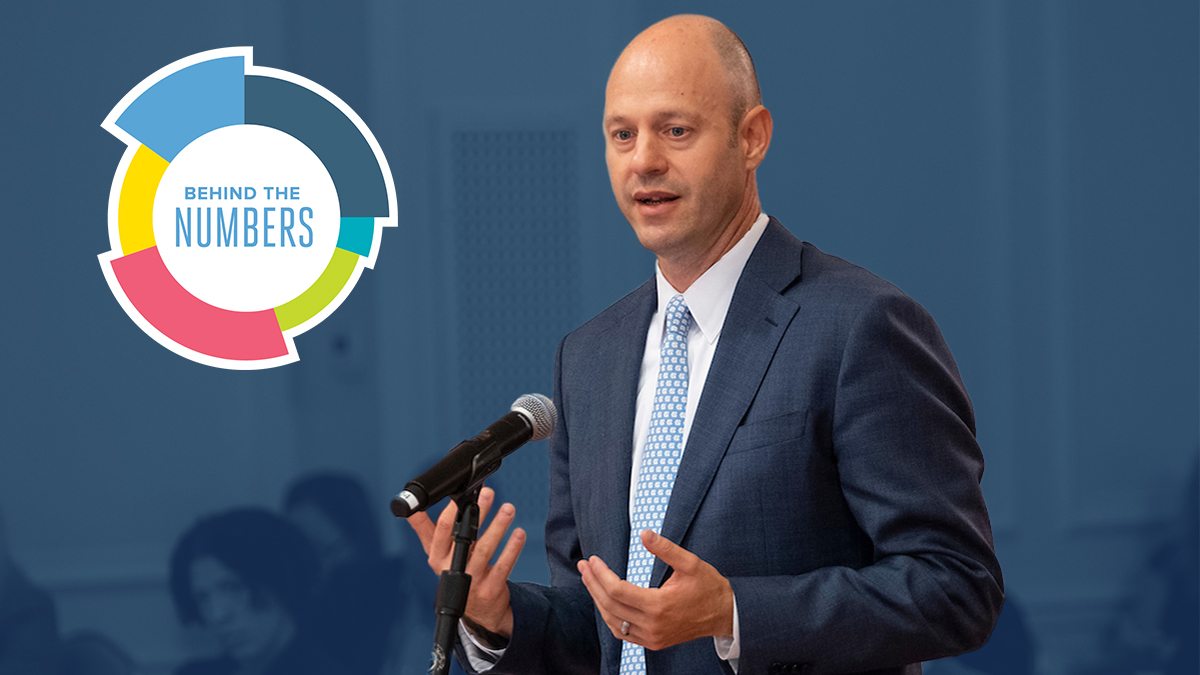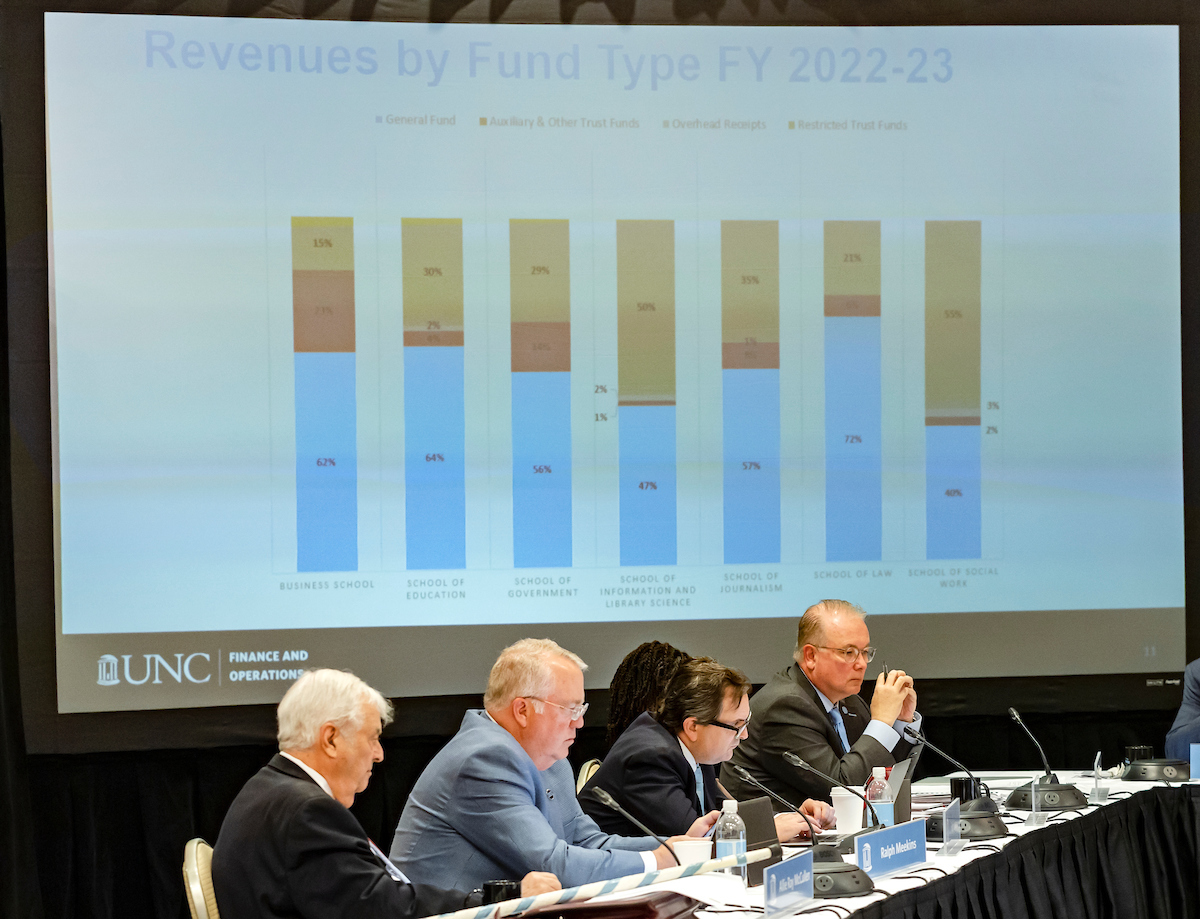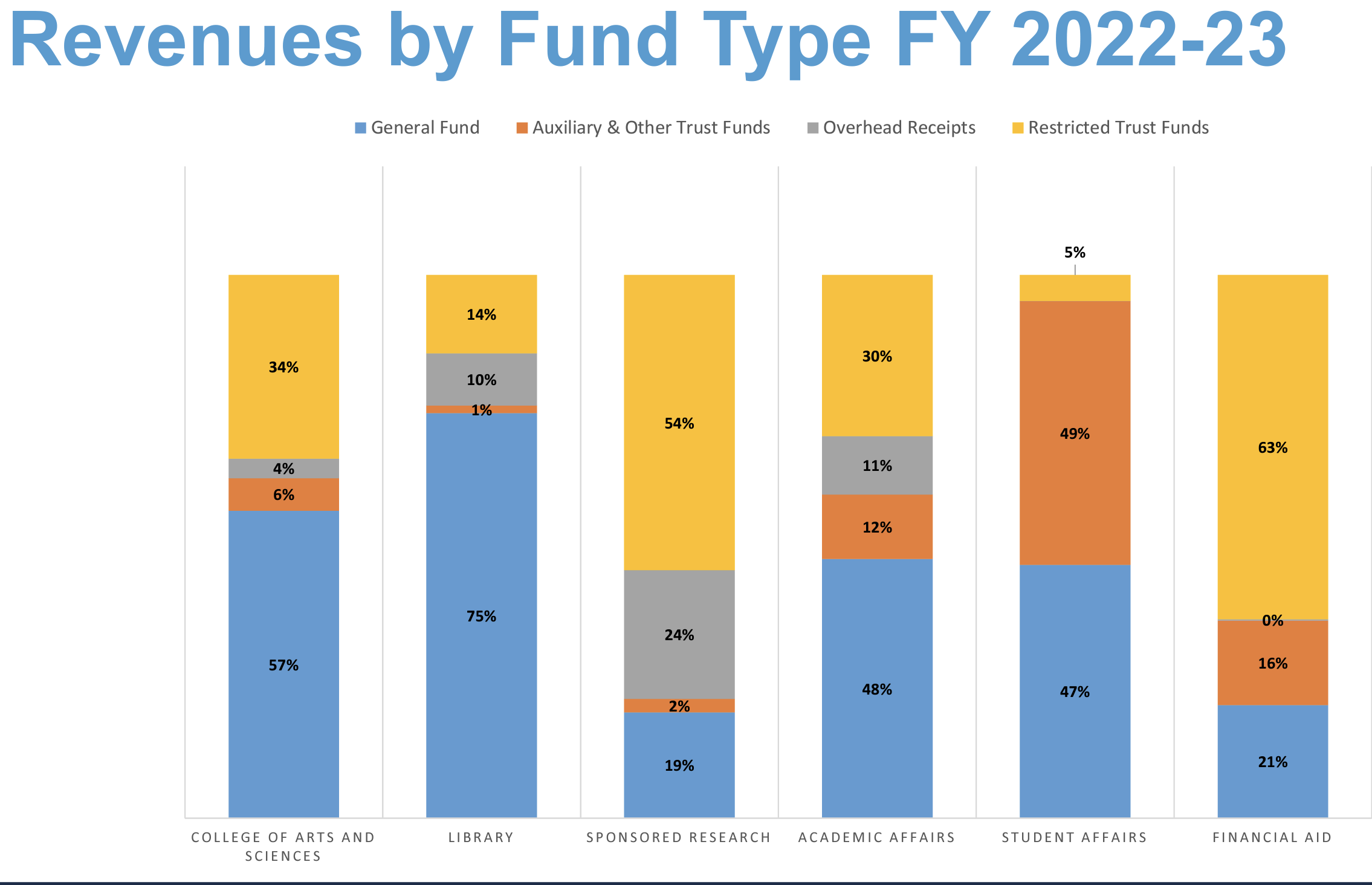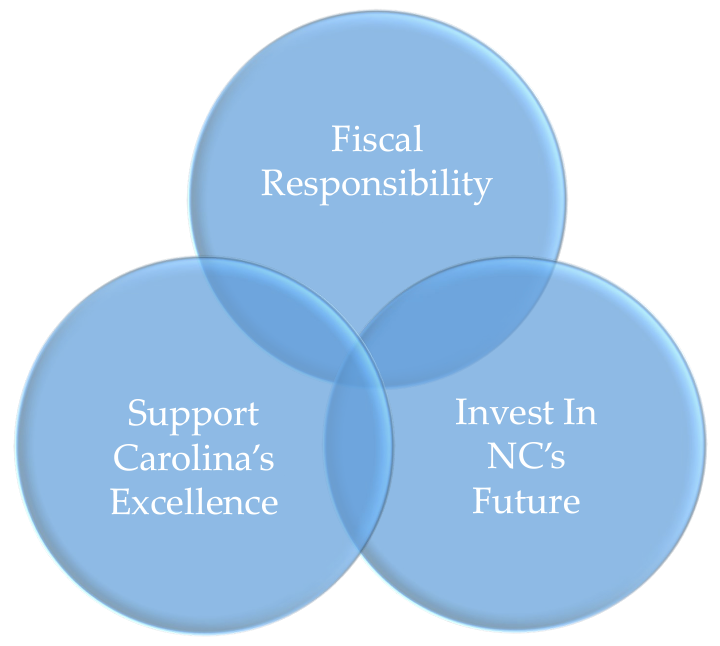Carolina projects first all-funds balanced budget
Nathan Knuffman, vice chancellor for finance and operations, is the man with the $4 billion budget plan, which he will present to the UNC System Board of Governors at its meeting on May 25.

How do you go from a $300 million deficit to a balanced budget in less than three years?
It helps when you have a plan. And, hard as it is to believe for a $4 billion enterprise like Carolina, the University had never projected an all-funds balanced budget.
Until now.
Nathan Knuffman, vice chancellor for finance and operations, will present the plan approved in March by the Board of Trustees for final review by the UNC System Board of Governors at its meeting on May 25.
“It has involved much more transparency. It has involved establishing a balanced budget for the first time in about nine years,” Chancellor Kevin M. Guskiewicz said. “I’m proud of the fact that we’ve worked as a team to get to this point. We actually have a modest revenue base that we can reinvest in our people and in the mission of this University.”

The UNC Board of Trustees’ Budget, Finance and Infrastructure Committee approved the all-funds budget in March. (Johnny Andrews/UNC-Chapel Hill)
“The University now has a financial roadmap that can be used to achieve its strategic initiatives,” said David L. Boliek Jr., chair of the University’s Board of Trustees, who thanked Knuffman, Guskiewicz, and the trustees, administrators, staff and faculty who worked so hard to balance the budget.
So how did it happen? The key components of the success were:
- Eliminating a $100 million structural deficit by trimming personnel funds by 1.5% and central operating funds by 7.5% for fiscal years 2021 and 2022.
- Offsetting $200 million in lost revenue due to COVID-19 through effective management plans, federal Higher Education Emergency Relief Funds and additional emergency funding, more research funding and increased enrollment.
- Creating a centralized budget model that incorporates all the University’s expected revenue sources and projected expenditures.
As critical as those tough cuts and a boost in COVID-19 funding were, it’s the last item — the plan — that promises budget stability and success going forward.
Two things make the all-funds balanced budget plan different, and they are both in the name. “All-funds” means that all revenue sources are accounted for; it’s a centralized overview of where the money comes from and how it’s being spent. “Plan” means that this budget projects what revenue will come in and how it will be spent in the coming year. This is different from the backward-looking annual financial reports the University produces to show revenues and expenditures from the previous year — reports that sometimes balanced but sometimes didn’t.
“We were operating from an annual financial report. That was the only financial tool we had, and it was backward-looking,” Knuffman said. “We established a template, built some trust on campus and used it to weather a pandemic and address a fiscal challenge.”

Knuffman used charts like this one to show revenue sources for various parts of the University.
The plan
The decentralized way money was spent at the University until 2019 made it hard to account for what bills needed to be paid and where the money to pay them came from. The $100 million structural deficit was a wake-up call that the University needed a better system to account for all its expenses and revenues. It also had to make up that deficit with budget cuts and efficiencies. The COVID-19 pandemic and the pivot it caused the University to make to remote instruction created another revenue shortfall to be addressed.
In 2020, the chancellor and Knuffman, then-interim vice chancellor for finance and operations, had to establish trust and get buy-in from the campus. Help us in the short term to address these deficits, they said when meeting with campus stakeholders, and we’ll work with you to set priorities and invest in them going forward.
Then they got to work on making the numbers match not only on the balance sheet but also with the Carolina Next strategic plan and its priorities.
“This budget is fiscally balanced. We’re putting funds toward our top priorities,” Knuffman said. “We’re mindful of what North Carolina needs from us. It’s committed to regional and economic development. It recognizes our research enterprise. And it’s a gigantic jump forward in transparency.”
Thematic approach to budget
Knuffman used a template from the UNC System as a guide for his budget report. The template consists of tables showing revenue sources and expenses for each of the schools and major units, a two-page narrative and a checklist of UNC System priorities such as progressing toward system-wide goals, streamlining programs, office and services, and reducing layers of management and administration.
 But the themes that shape the budget came from the Chapel Hill campus.
But the themes that shape the budget came from the Chapel Hill campus.
- Invest in North Carolina’s Future.
- Support Carolina’s Excellence.
- Demonstrate Fiscal Responsibility.
The Invest in North Carolina’s Future theme includes such wide-ranging activities as support for local and regional economic development, enrollment expansion and the new IDEAs in Action curriculum, research and innovation as well as educating the state’s health care workforce.
Support Carolina’s Excellence focuses on the University’s biggest investment: the people who work here, including funding for faculty and staff recruitment, retention and salary adjustments and implementing Future of Work recommendations to improve workplace flexibility.
Fiscal Responsibility includes committing to a sustainable budget, using University funds to address repair and renovation needs, saving through administrative efficiencies, reviewing spending continuously, benchmarking administrative performance and reducing senior administrative positions.
“This will evolve,” Knuffman predicted about the new budget model.
He was right. Even before he presents this budget to the Board of Governors later this week, the group announced in April that it was adopting a new performance-based budget model that emphasizes student success instead of enrollment numbers.
Institutions will have one year to transition to the new model. Knuffman is ready for the next phase. “We’ve made a lot of progress. There are important steps to think about how this evolves,” he said. “We recognize there’s a linkage between those resources, and performance is very important. And we want to make sure we capture that moving forward.”




